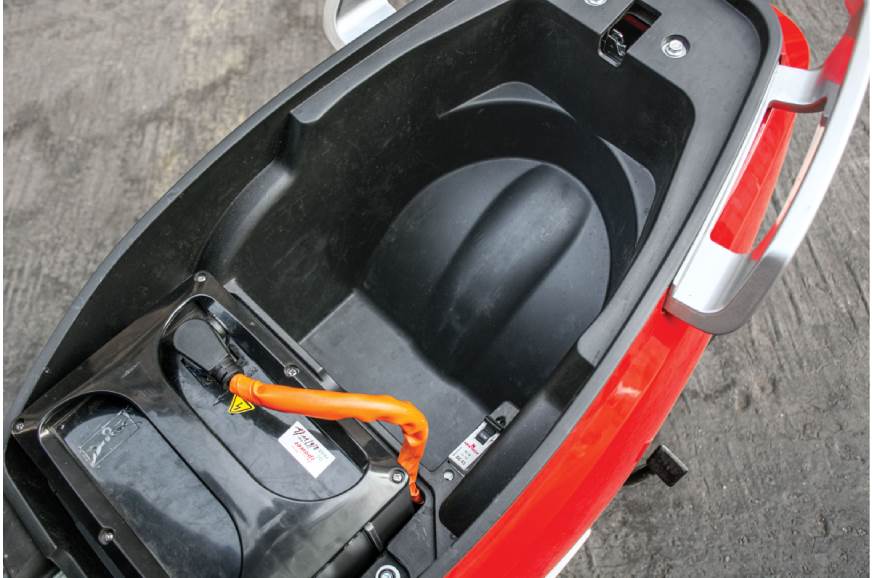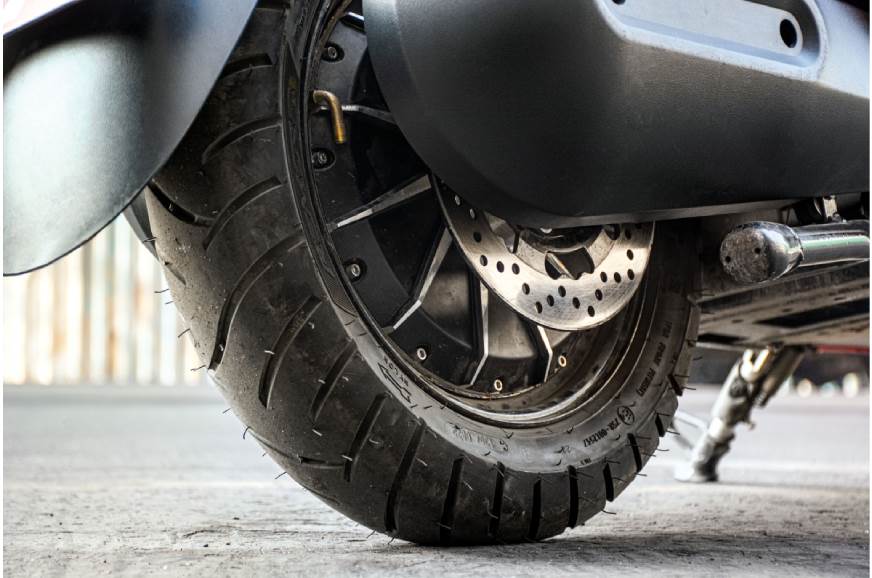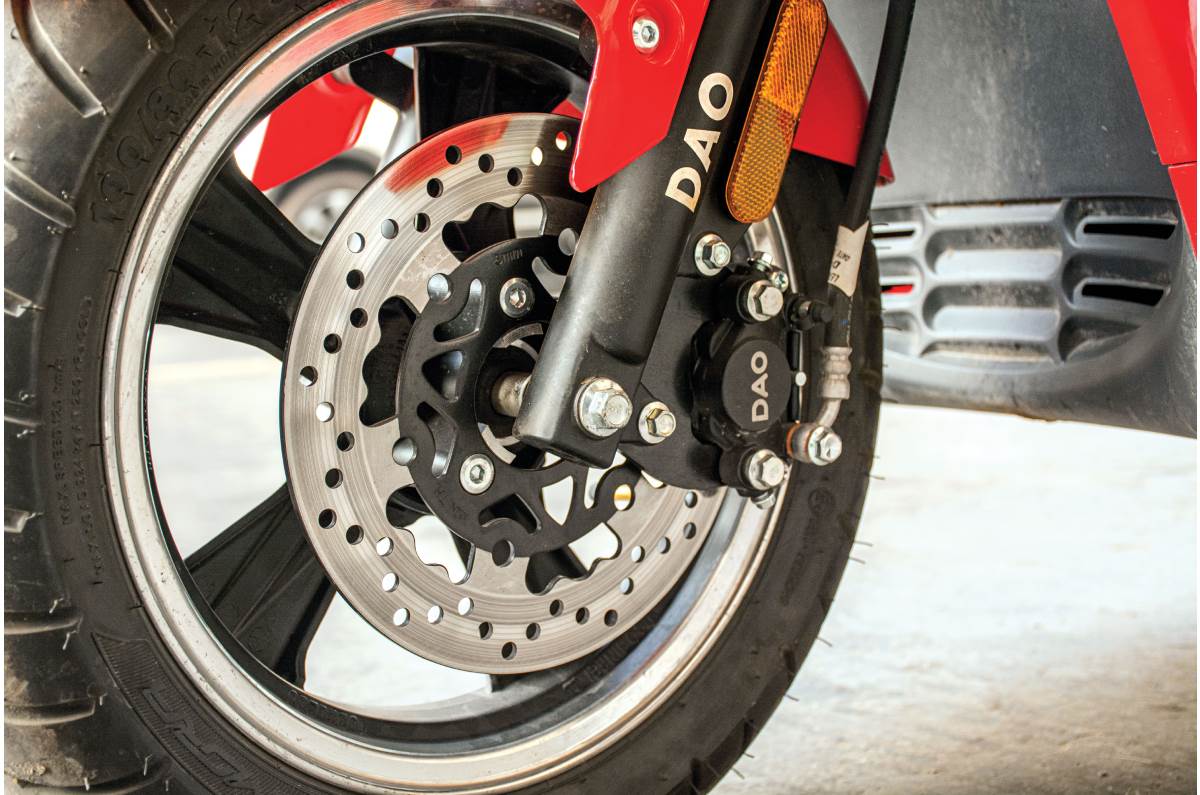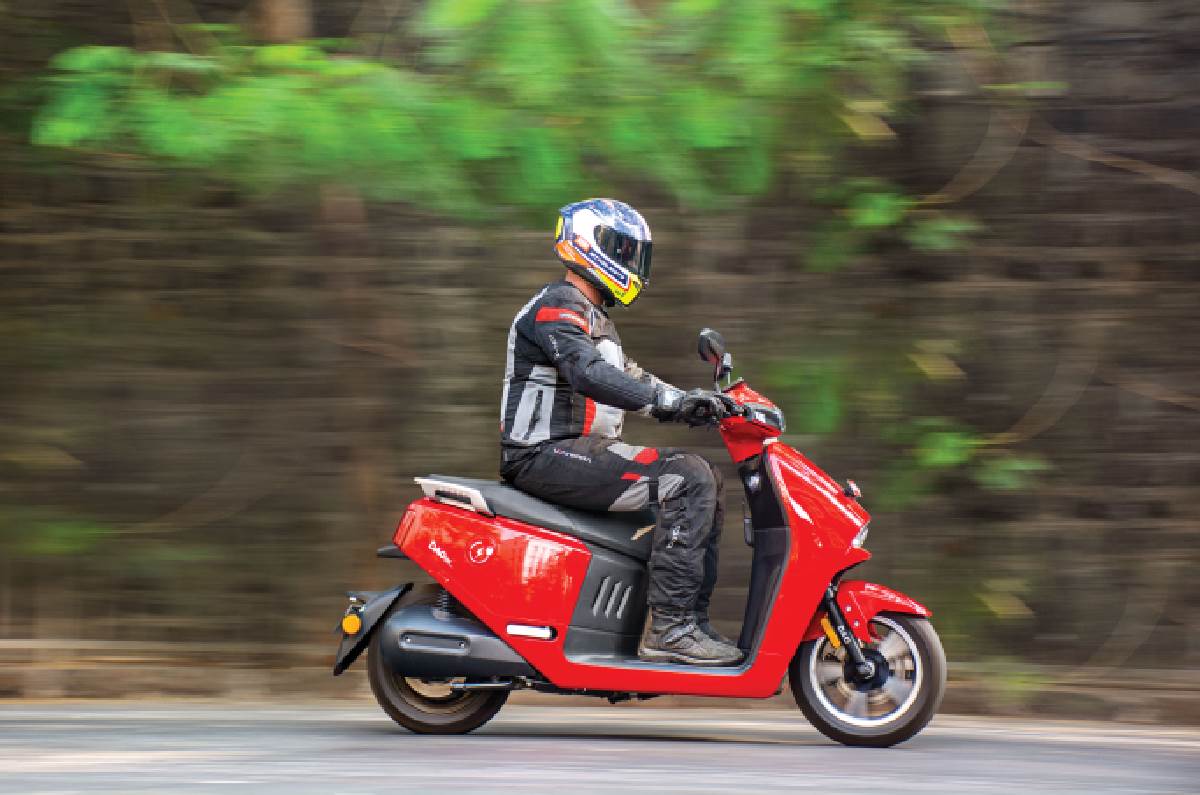Dao EV tech is based in Hyderabad and has a manufacturing plant in Chakan, Pune. While the scooter is made in India, using components sourced from local vendors, its Chinese origins are obvious in the way it is designed and finished. The question is, is it worth considering?
Nice and unusual is possibly the best way to describe the design of the 703. There are no ungainly shapes or lines to create visual drama, and that’s something I appreciate. The front apron, for instance, houses the LED headlight and you’ll notice a set of DRLs on the handlebar shroud. The side panel is a flat surface that merges with the rectangular tail-light cluster. It’s boxy, but in a nice way. Sadly, this nice feeling about the design doesn’t carry forward to the build quality of the scooter.
Firstly, the plastic panels feel cheap and flimsy. And then the switchgear is basic and so old-school, I honestly don’t remember the last time I came across a two-wheeler without a push-to-cancel indicator. Lastly, rattles and thuds from the front end were prominent after two days of riding over Mumbai’s largely uneven and potholed roads. For perspective, scooters like the TVS iQube are far better at handling this sort of punishment.

Moving to the features, the all-LED lights, keyless ignition and tablet-like display are the noteworthy bits. As for the instrument cluster, the layout of all the information, like speed and battery percent, is easy to read when on the move. However, I cannot fathom why the company has wasted so much space and not included a distance-to-empty readout, something that’s crucial on an EV. It doesn’t even have a clock to display the time.
The scooter serves as a decently quick city runabout and keeps pace with traffic. This is true in the case of both, Eco and Sport modes. What was baffling, however, was that there was barely any difference in acceleration between Eco and Sport, as is evident from our test numbers. The performance is par for the course, with the acceleration from 0-40kph taking 6.92sec, and we managed to see an indicated 69kph top speed on the dash in Sport. But things start going south once the state of charge falls below 30 percent. From here on, there’s a notable drop in acceleration and the speed rises slowly. At 25 percent charge, for instance, the scooter’s top speed (in Sport) hovered around 35kph, but try climbing a flyover and the speed drops to 25kph or lower. That puts you in a dangerous situation where you may get rear ended, so it’s best to stick to the extreme left of the road.

The third mode, Power, caps the top speed at 35kph, strangely even slower than Eco mode. The company tells us that this is meant to be a ‘power saving’ mode. It essentially extends battery range to as much as possible. However, with subdued acceleration and such a low speed cap, it was too slow to safely ride in Mumbai, which is why we did our range tests in Eco and Sport.
Like most Chinese scooters in the market, the throttle calibration is more like an on/off switch and the motor cuts off the moment you touch the brakes. This prevents you from feathering the brakes, say while making a U-turn. The motor also automatically turns itself off after around 25sec of being at a standstill, which can leave you in a precarious position at traffic lights if you don’t quickly restart it.

However, the biggest bone I have to pick with the scooter is its unreliable battery range. In Eco mode, the scooter covered 69km, while in Sport that figure fell to 64km. These economy numbers are way below the claimed 80-100km range, but that’s still not the main concern. The real issue is that with 17 percent charge on the display, the SoC suddenly fell to 0 percent without warning, leaving me stranded by the road. Luckily, I was close to my office which has a charging point, so I didn’t have to push the scooter for a considerable distance. I got lucky, but it could have been far more inconvenient. While doing the same range test in Eco mode, the scooter suddenly went dead when the display said there was 14 percent left. Clearly, the battery percentage indicator cannot be trusted.
As for the time taken to charge the 2.16kWh LFP battery pack, it took around 4.5 hours. The convenience of a removable battery is welcome for those who can’t set up a charging point at their residence. LFP batteries improve the safety quotient, but the drawback is more weight. The 703’s battery pack weighs a massive 25kg, making it very difficult to haul around on a regular basis.
With a basic telescopic fork and twin shock absorber set-up, the scooter deals with most bumps in a better manner than some of the other low-cost electric scooters I’ve ridden, but it still thuds through bumps. What’s very nice are the ergonomics, with a tall handlebar and flat floorboard, riders of all shapes will be able to fit comfortably on this scooter.

Handling is another area where it fared better than I expected, with a planted feel around bends. Braking performance is decent as well, but like all electric scooters you get CBS, but no ABS.
Dao says it has 22 dealerships/service centres in India, and the company’s promise of free service for life will seem lucrative to some people, while others may prefer it for the convenience of its removable battery. However, at Rs 99,999 (ex-showroom, India, with FAME II subsidy), the Model 703 is priced very ambitiously, considering what it has to offer, and that is its Achilles heel. In Mumbai, it costs Rs 1.05 lakh, on road, and that puts it far too close to the likes of the TVS iQube.

The iQube has vastly more performance, range, features and quality – it is the better scooter in every aspect, not to mention the brand value, sales and service might of TVS. Taking all this into consideration, the Model 703 struggles to justify its price.
























